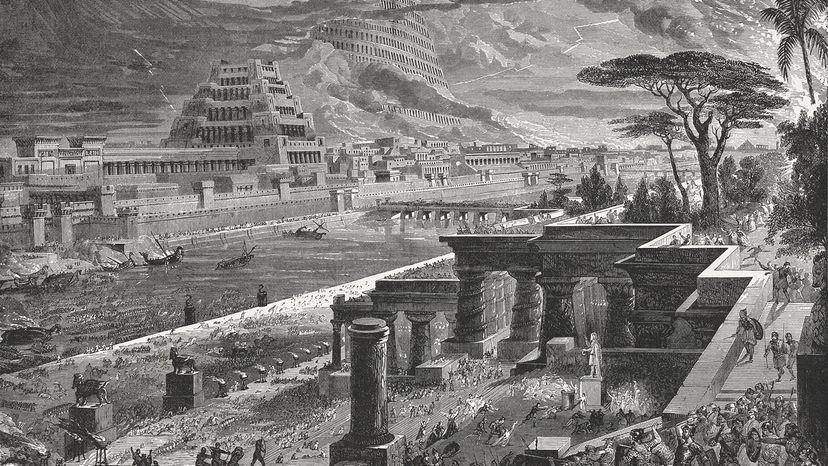Babylon, a name resonating through millennia, conjures images of ancient grandeur, biblical tales, and the opulence of a bygone era. But where is this legendary city actually located? The answer lies in present-day Iraq, a region steeped in history and often referred to as the cradle of civilization. The ancient city of Babylon was strategically positioned in Mesopotamia, nestled between the Tigris and Euphrates rivers. This fertile land, now part of modern-day Iraq, was the heartland of Babylonian civilization.
 The Fall of Babylon: Illustration of Cyrus the Great's Persian Army Conquering Babylon in 539 B.C.E.
The Fall of Babylon: Illustration of Cyrus the Great's Persian Army Conquering Babylon in 539 B.C.E.
To be precise, the ruins of Babylon are situated approximately 85 kilometers (55 miles) south of Baghdad, Iraq’s capital. This location placed Babylon at a crucial crossroads, facilitating trade and cultural exchange in the ancient world. The city thrived on the banks of the Euphrates River, which was vital for irrigation, agriculture, and transportation, contributing significantly to Babylon’s prosperity and influence.
Historically, Babylon rose to prominence during the reign of Nebuchadnezzar II, who ruled from 605 to 562 B.C.E. Nebuchadnezzar transformed Babylon into a magnificent metropolis, extending the Babylonian empire across vast territories including Egypt, Syria, and the Kingdom of Judah. His ambitious building projects included colossal city walls, the awe-inspiring Processional Way, and the iconic Ishtar Gate. These architectural marvels solidified Babylon’s status as the largest and most modern city of its time.
Nebuchadnezzar’s Babylon was not only a center of political power but also a hub of culture and religion. He dedicated significant resources to the temple of Marduk, the city’s patron deity. This temple, a towering ziggurat, may have inspired the biblical Tower of Babel narrative, reflecting Babylon’s perceived ambition and grandeur in ancient texts.
Despite its magnificence, Babylon also became associated with imperial cruelty and pagan idolatry, particularly in Judeo-Christian traditions. The biblical accounts of the Babylonian exile and the symbolic “Whore of Babylon” in the Book of Revelation cast a shadow on the city’s image in Western culture.
Today, the archaeological site of Babylon stands as a testament to its rich history. While much of the ancient city is in ruins, ongoing efforts are being made to preserve and study this significant location. Though once a sprawling urban center, modern Babylon is a shadow of its former self, but it continues to draw historians and tourists eager to explore the remnants of this influential civilization in its original location in Iraq. Visiting Babylon today offers a tangible connection to the past, allowing one to walk the grounds where one of history’s most significant empires once flourished.

